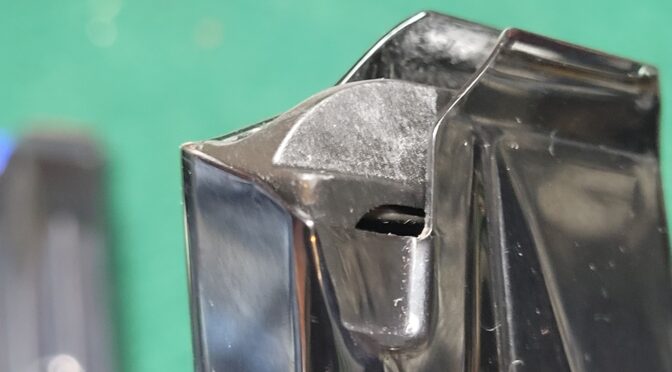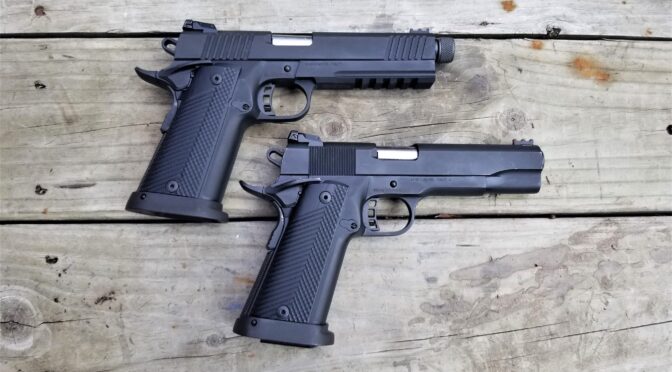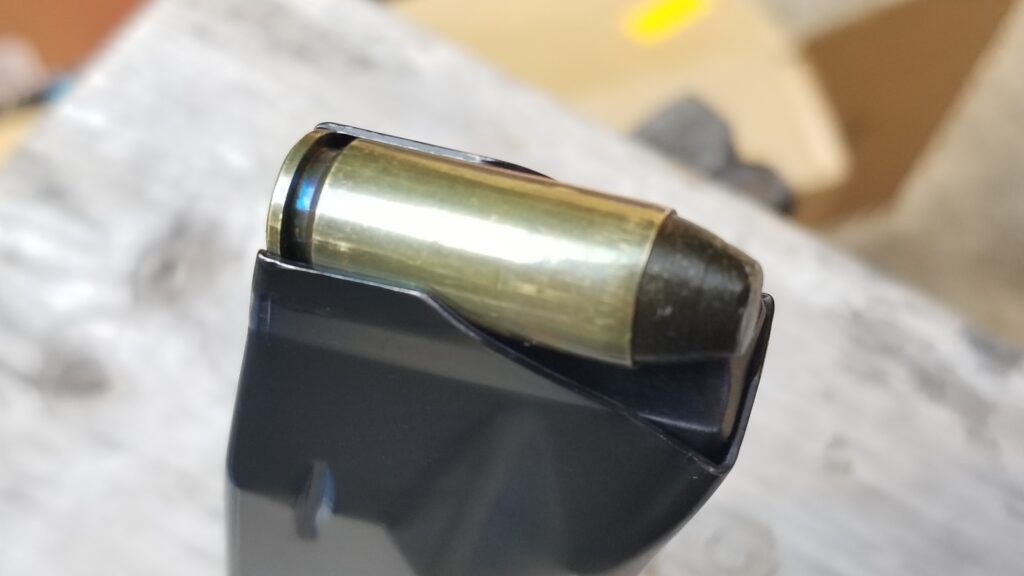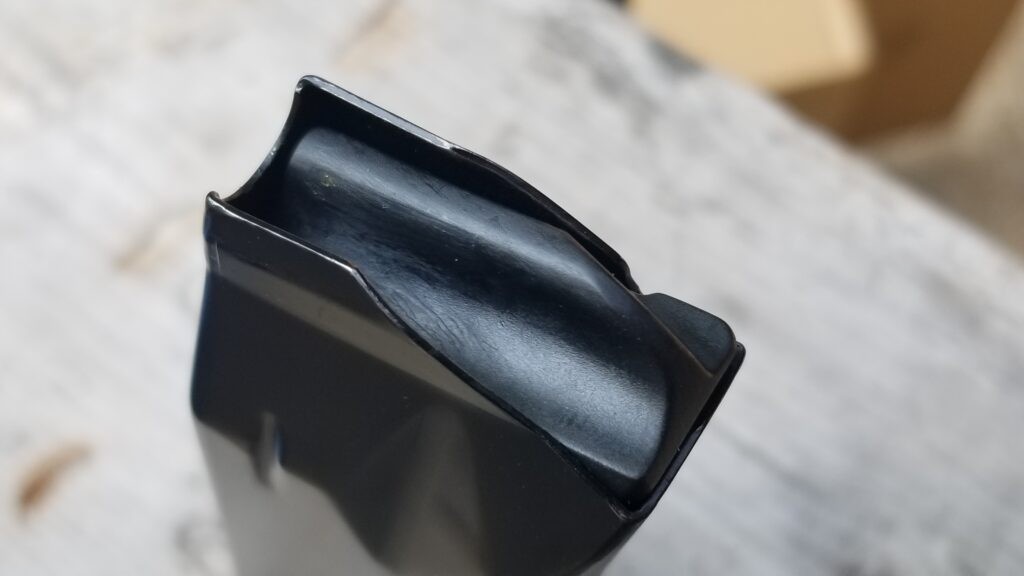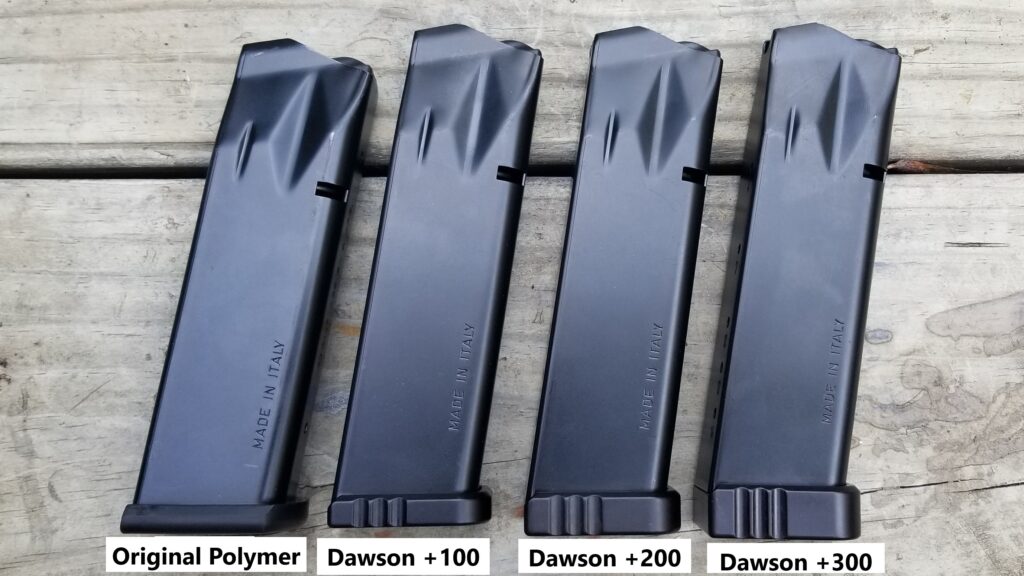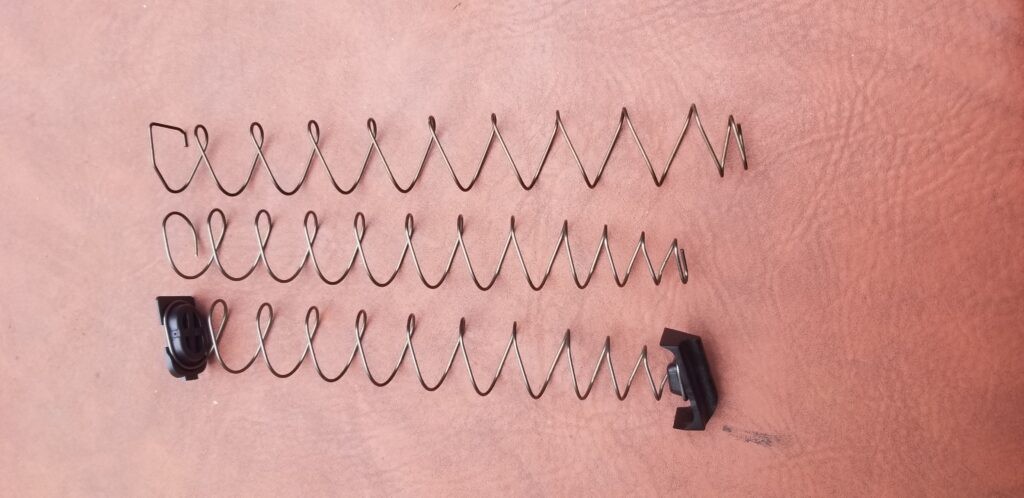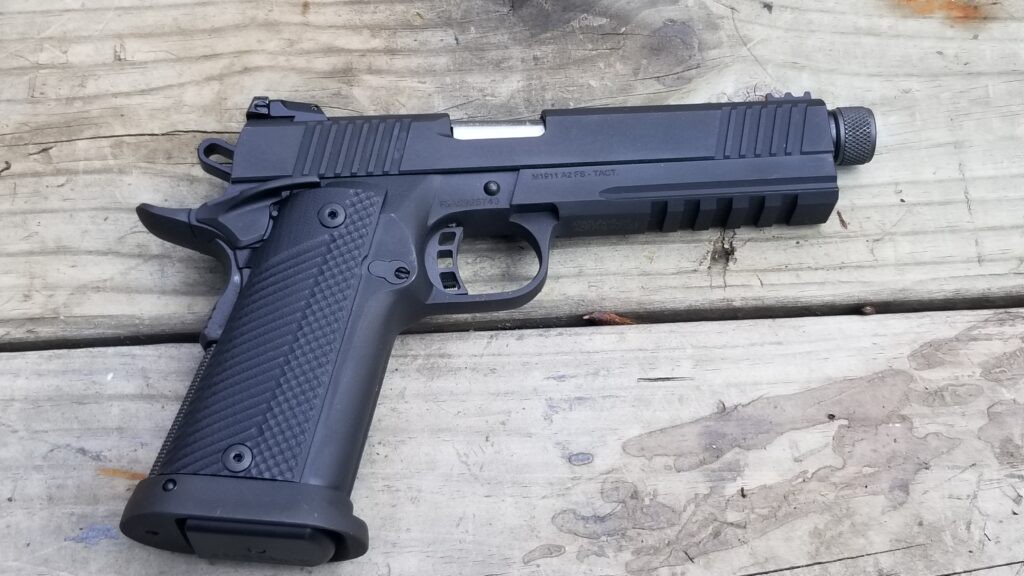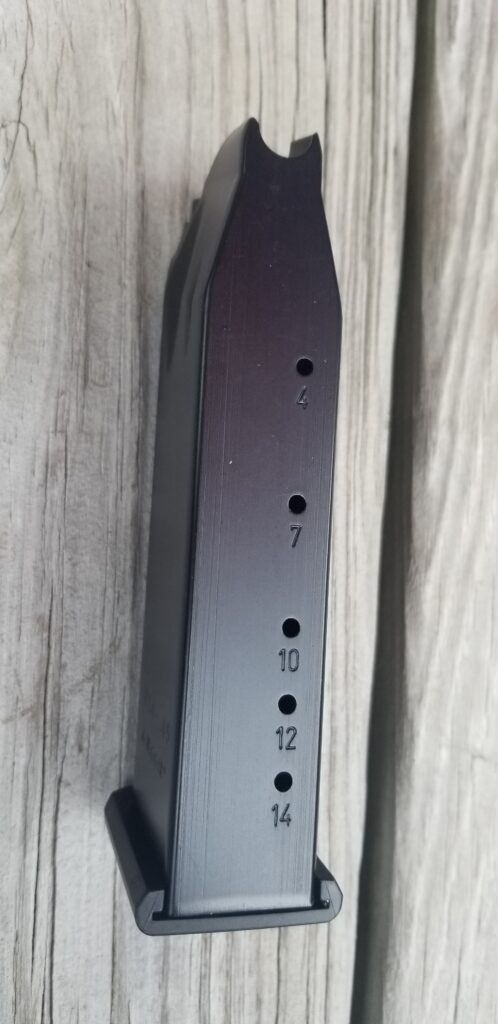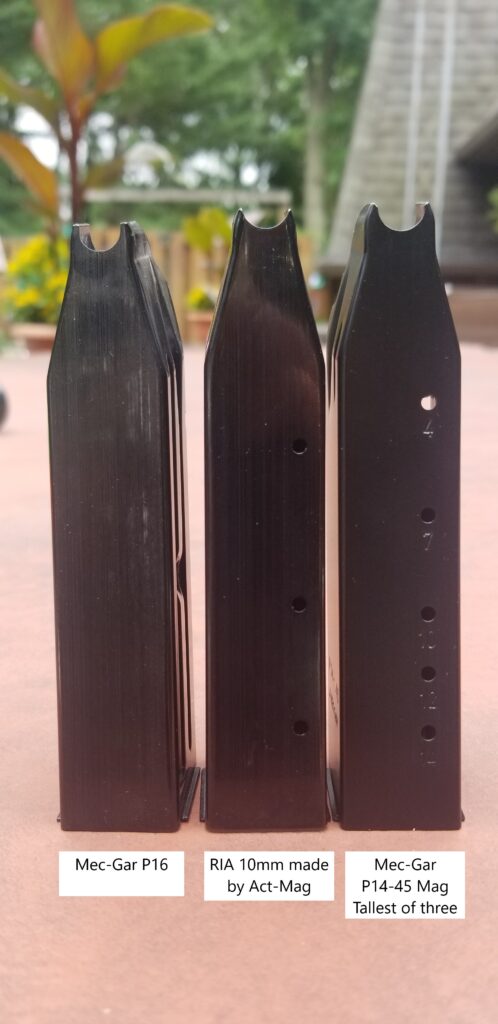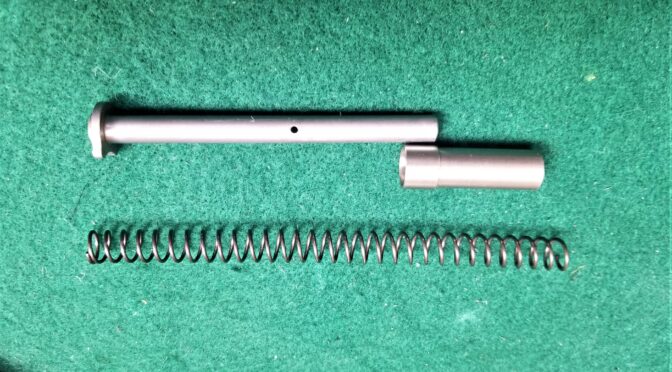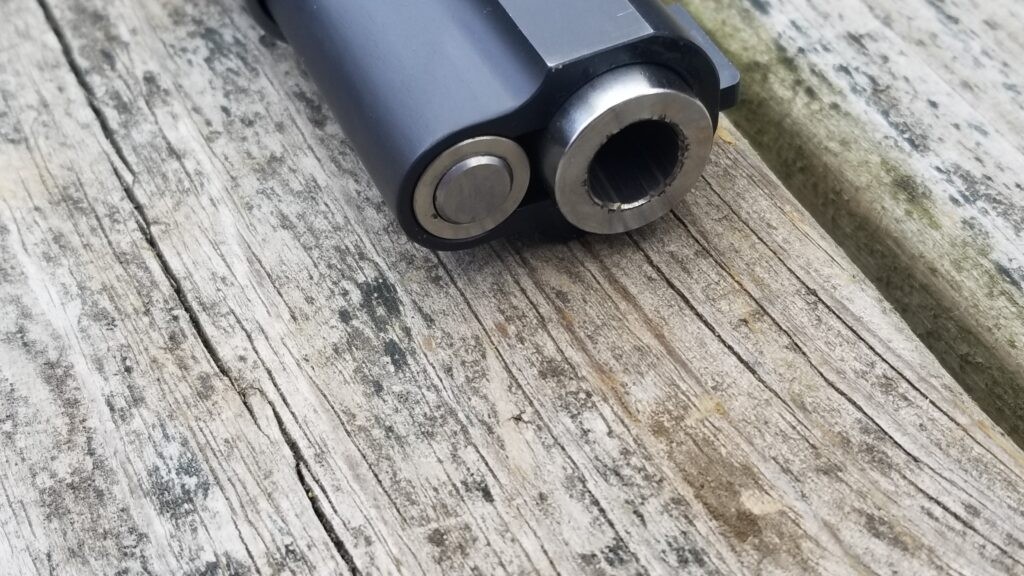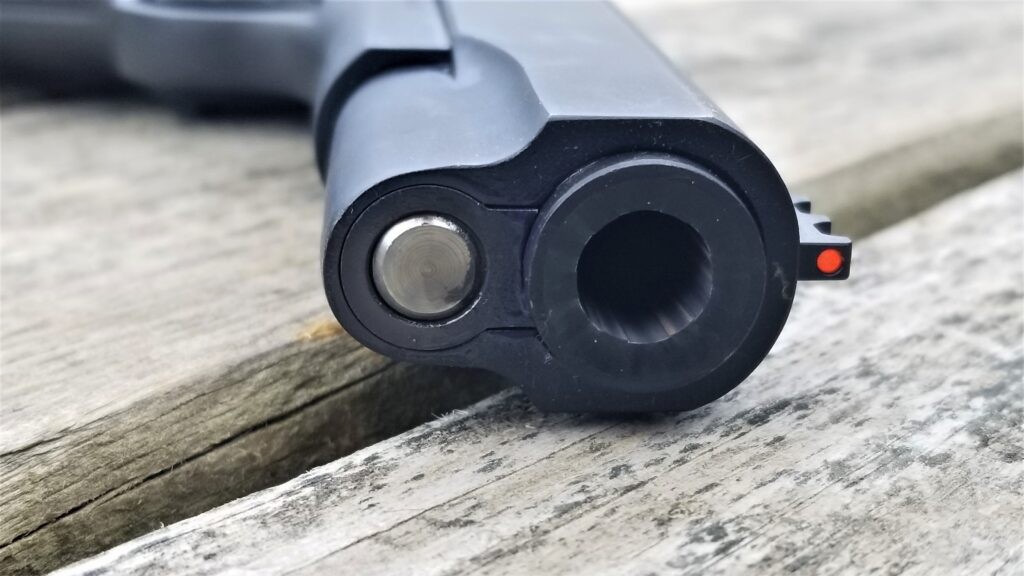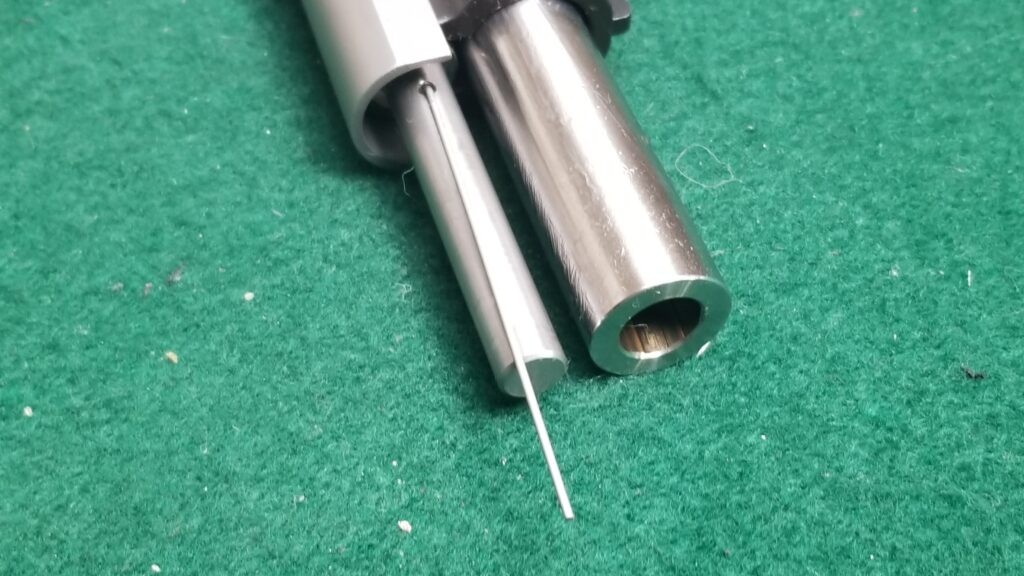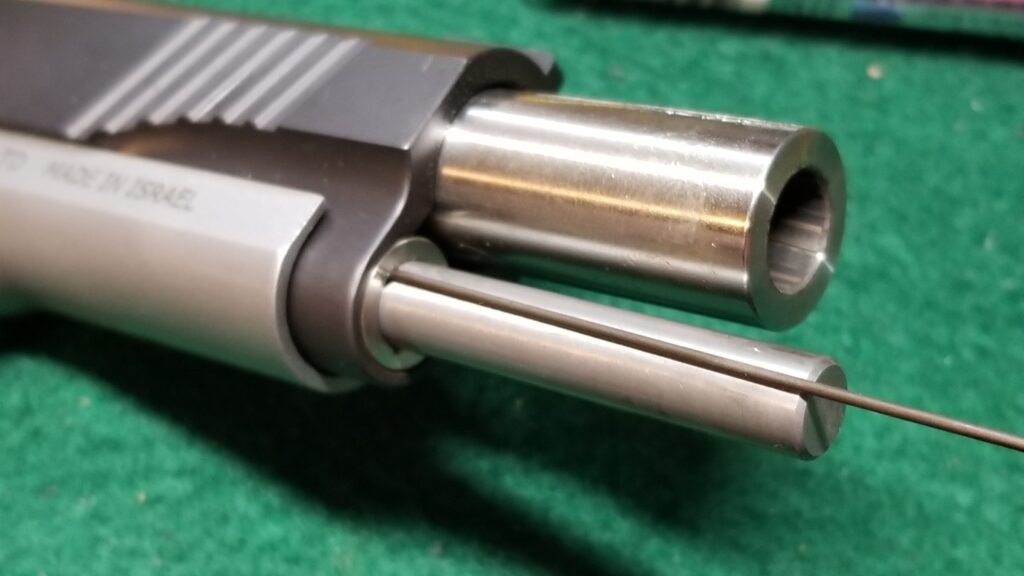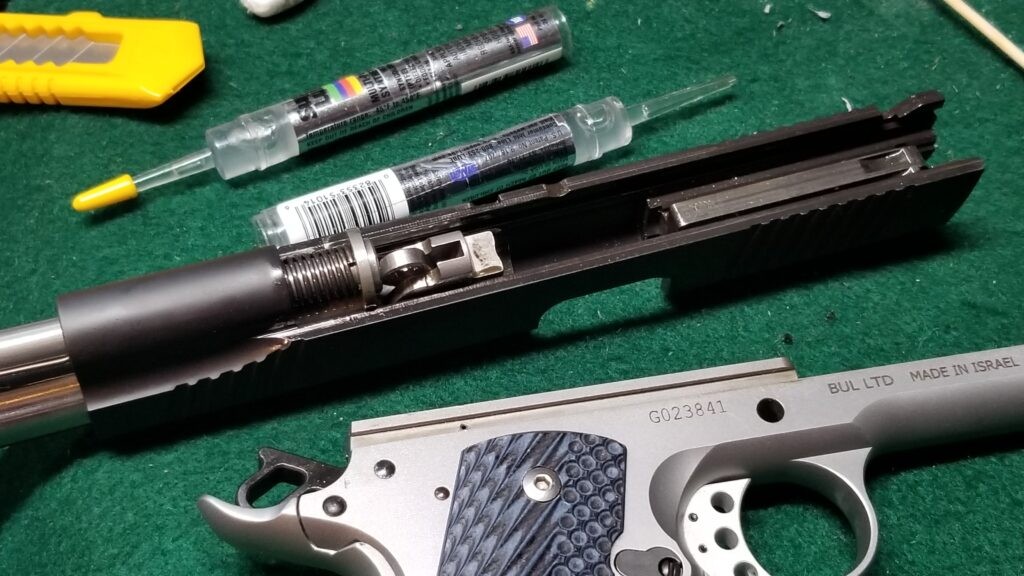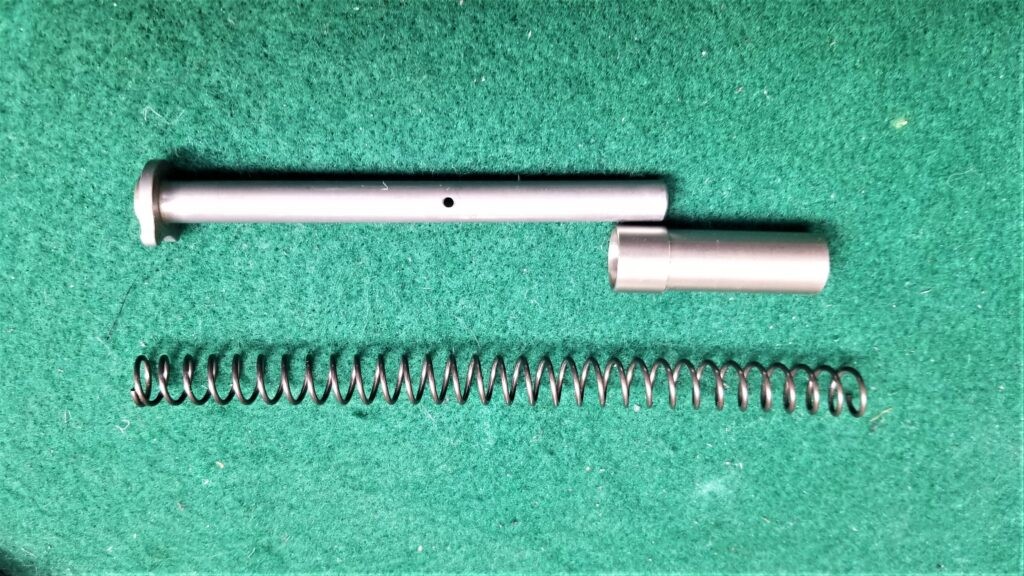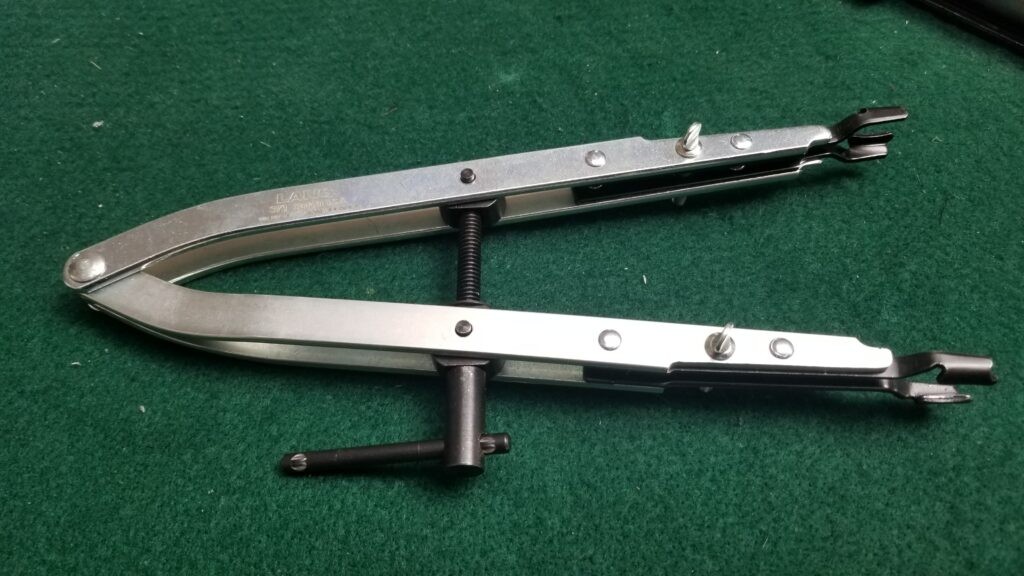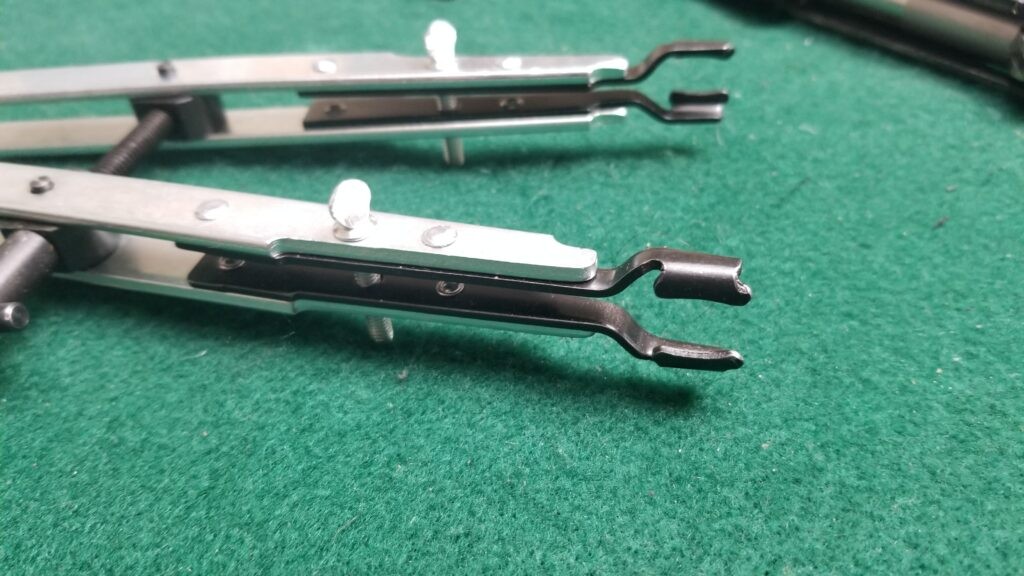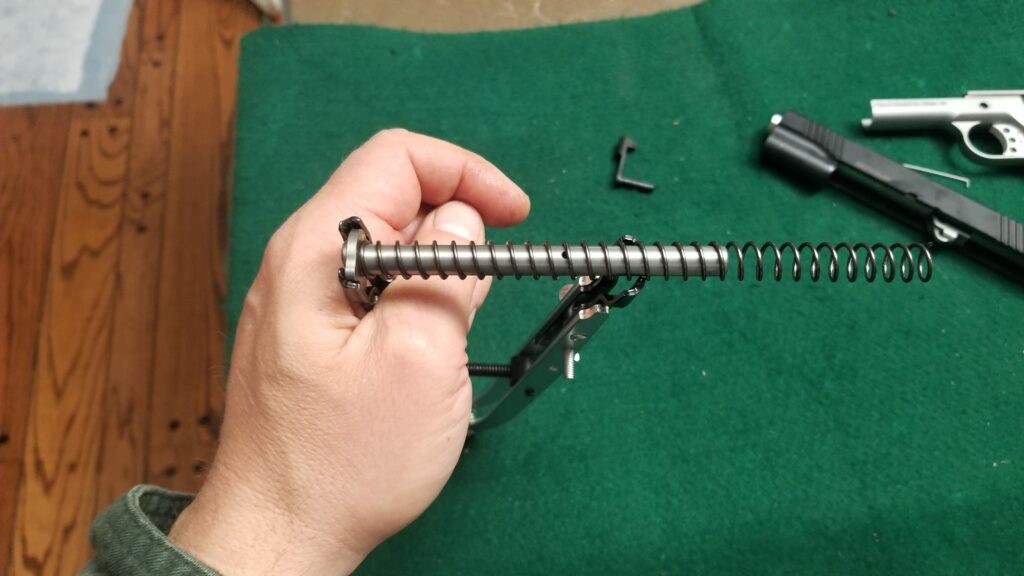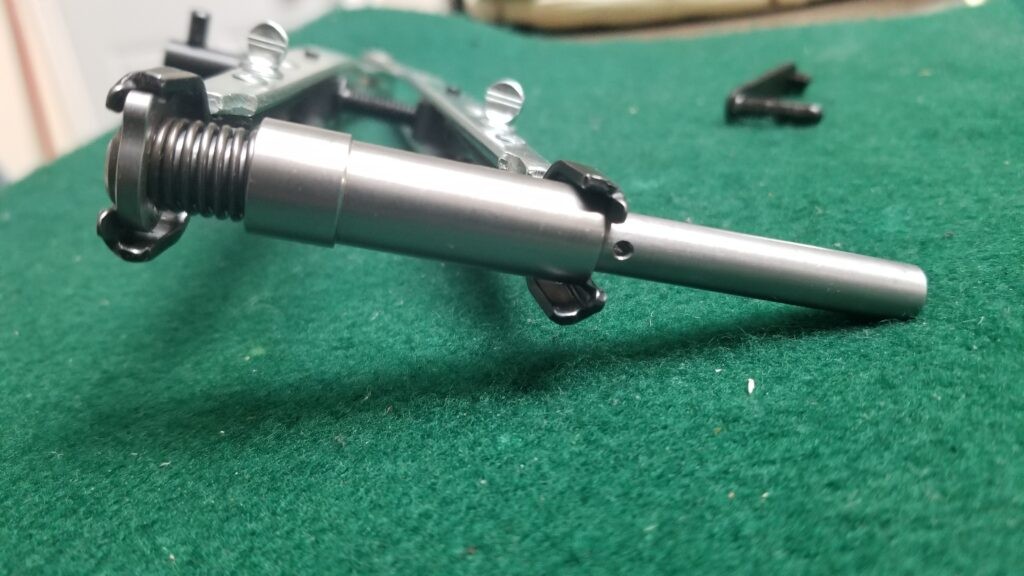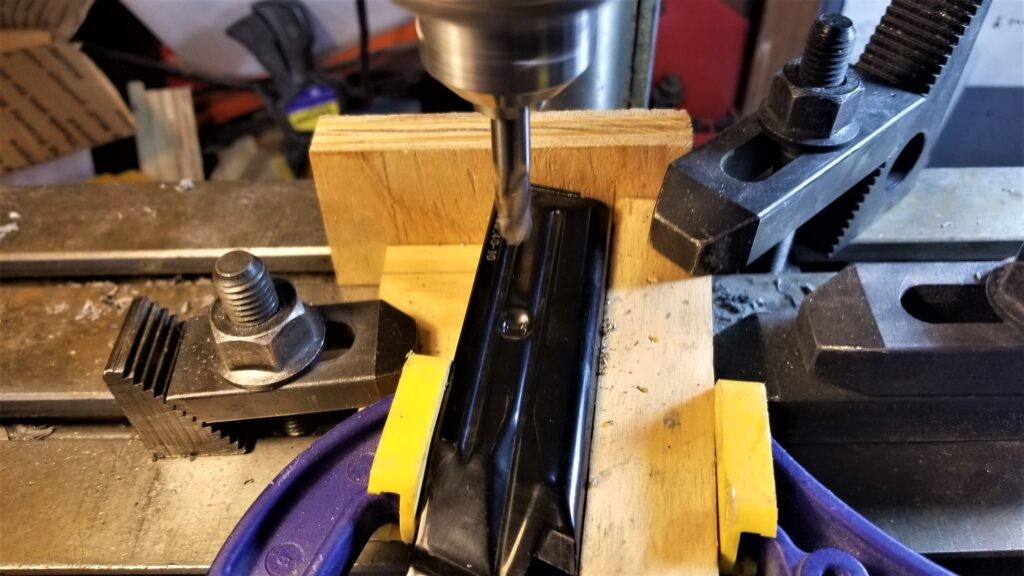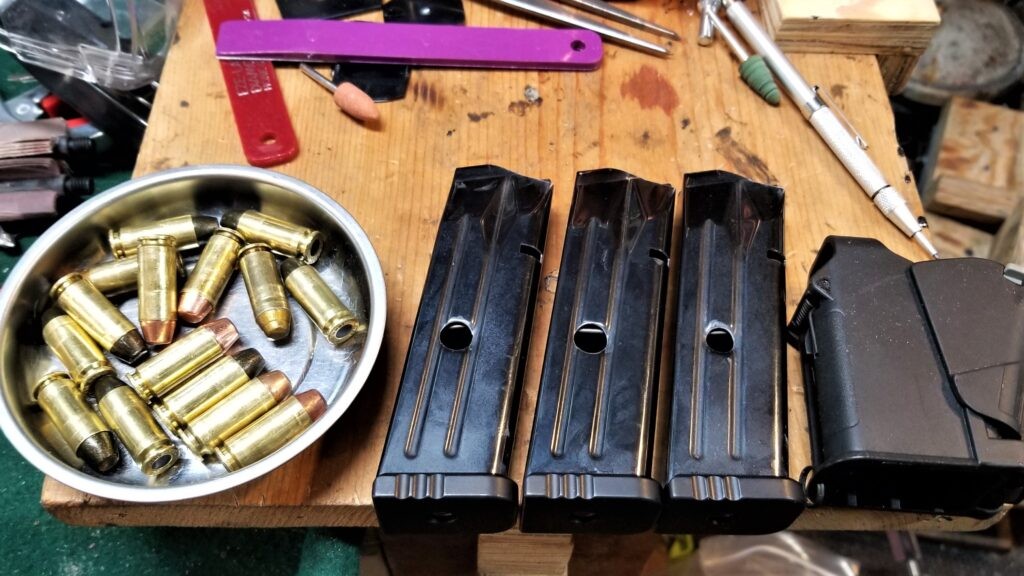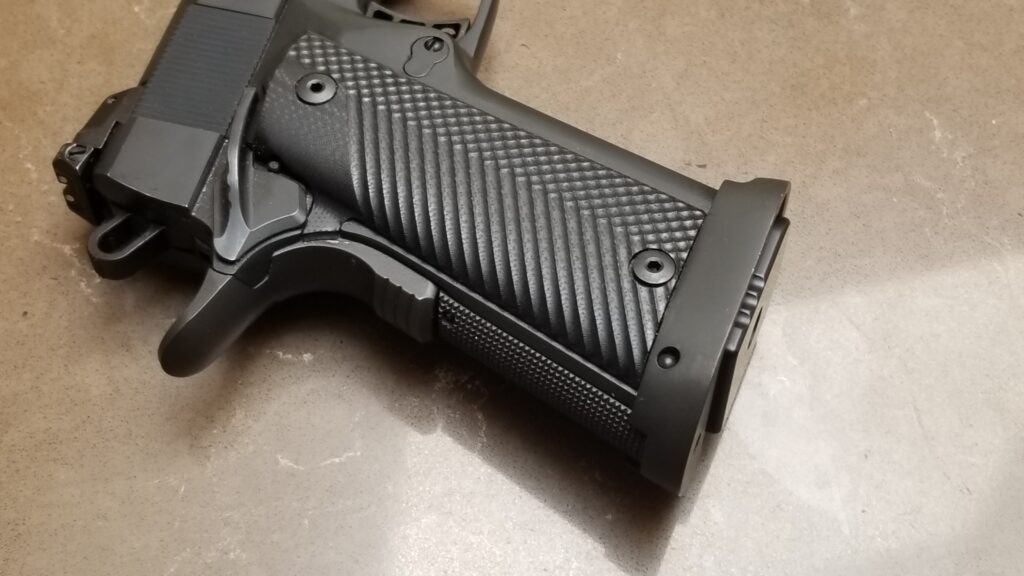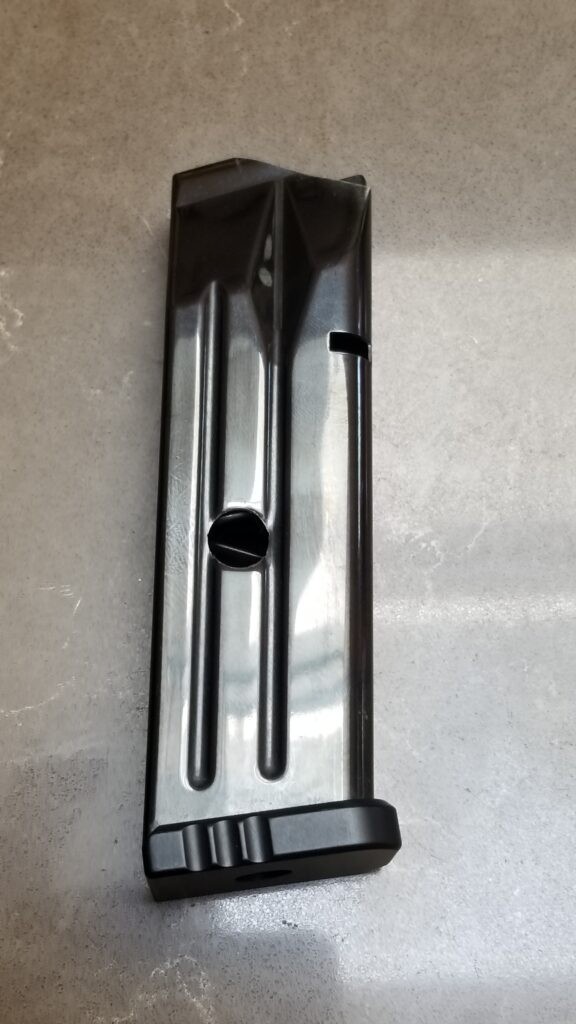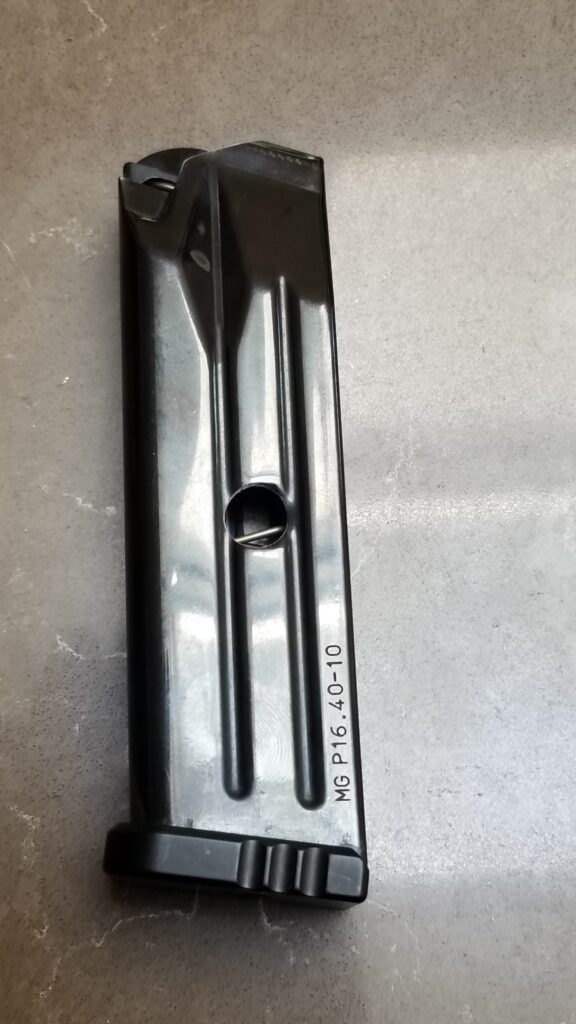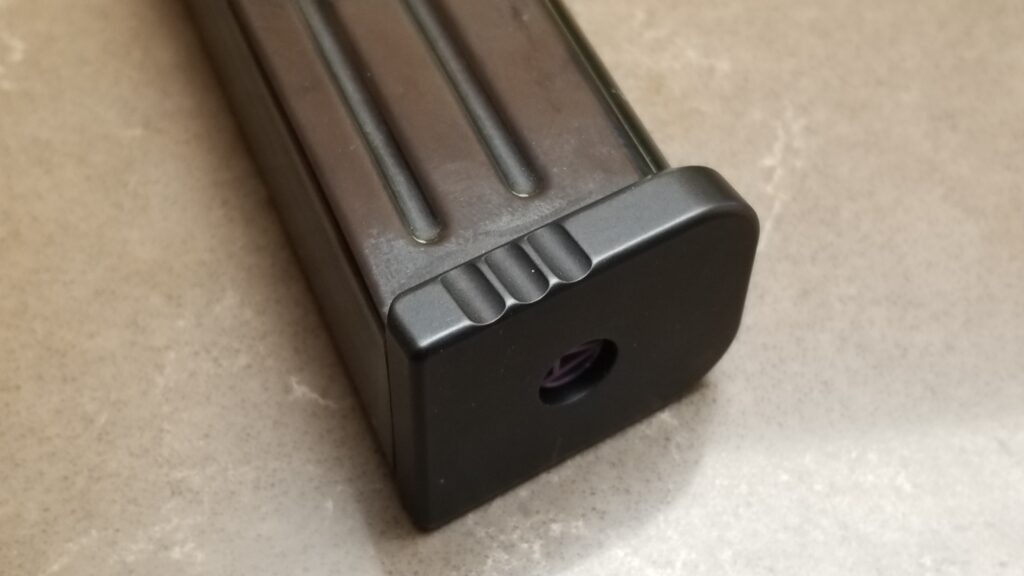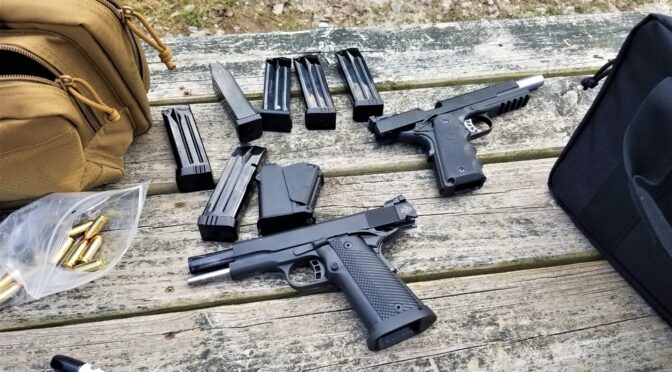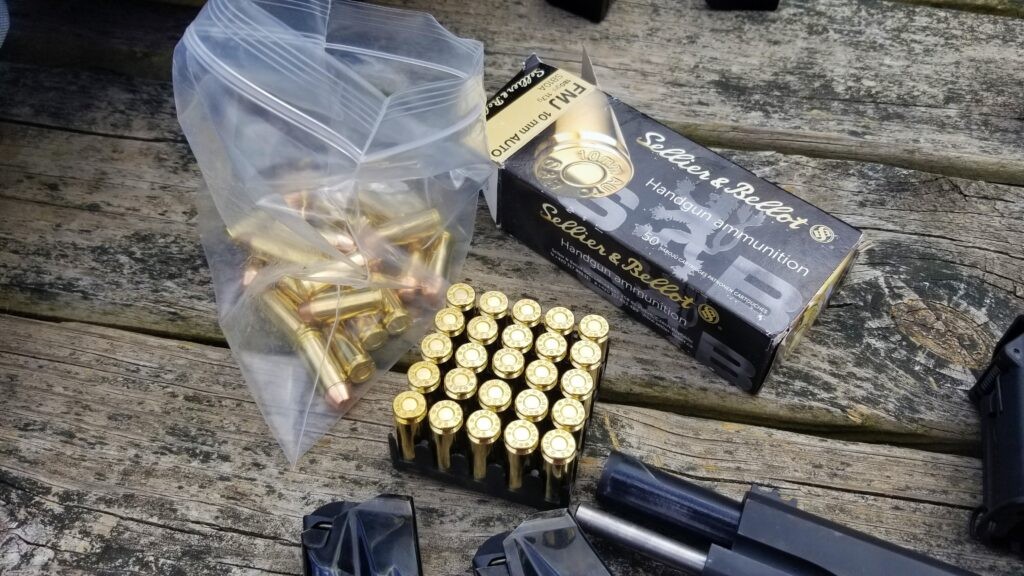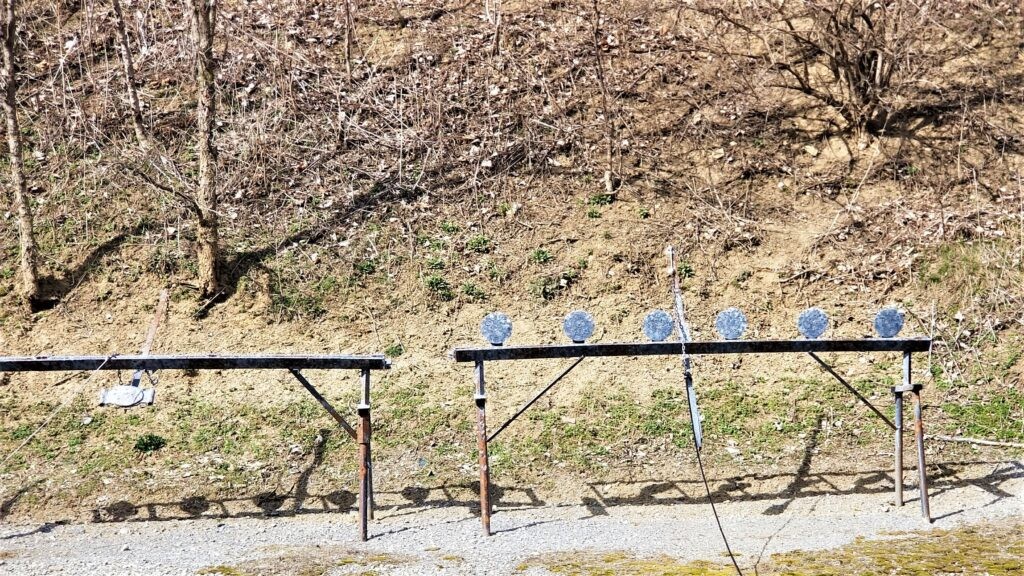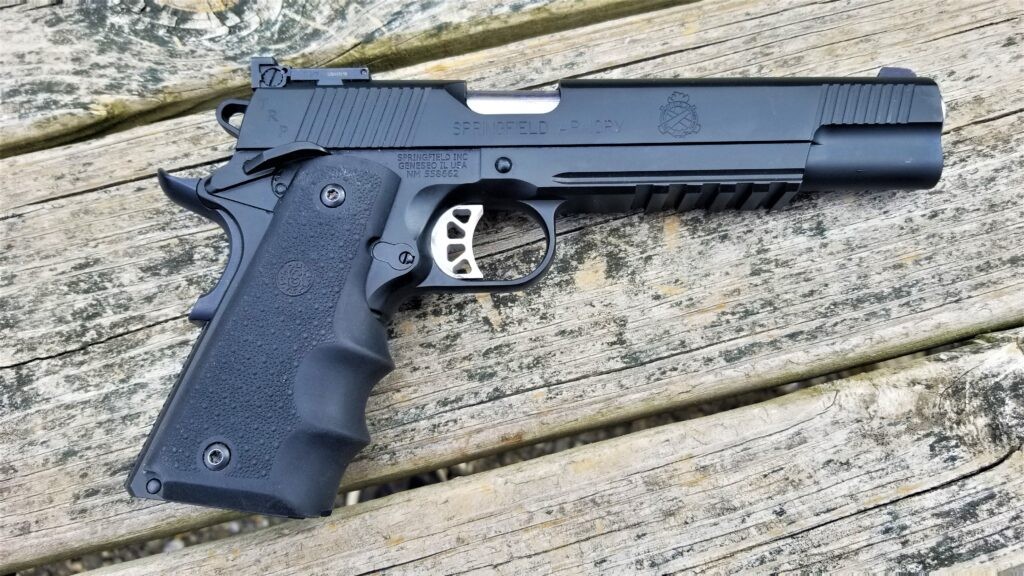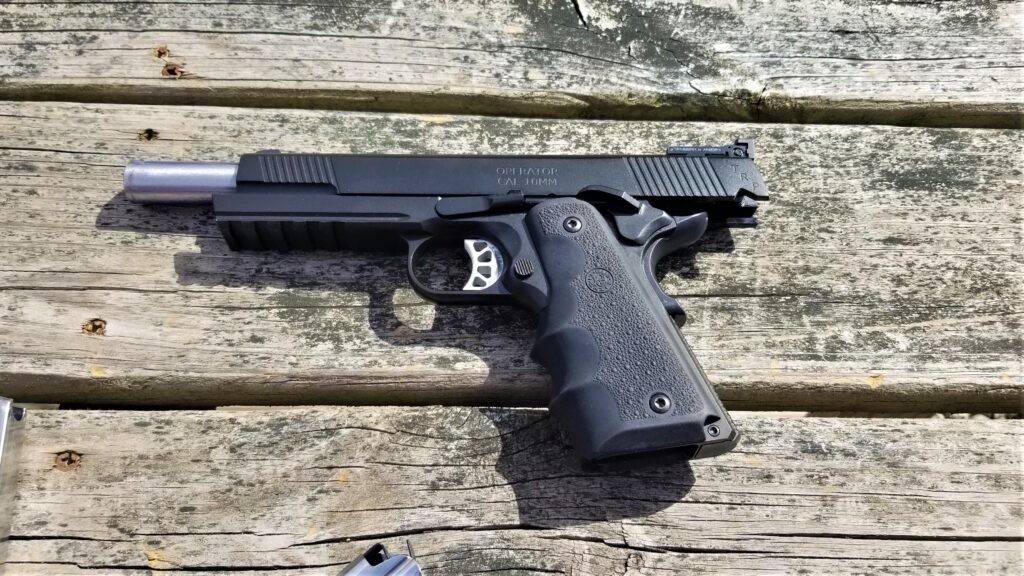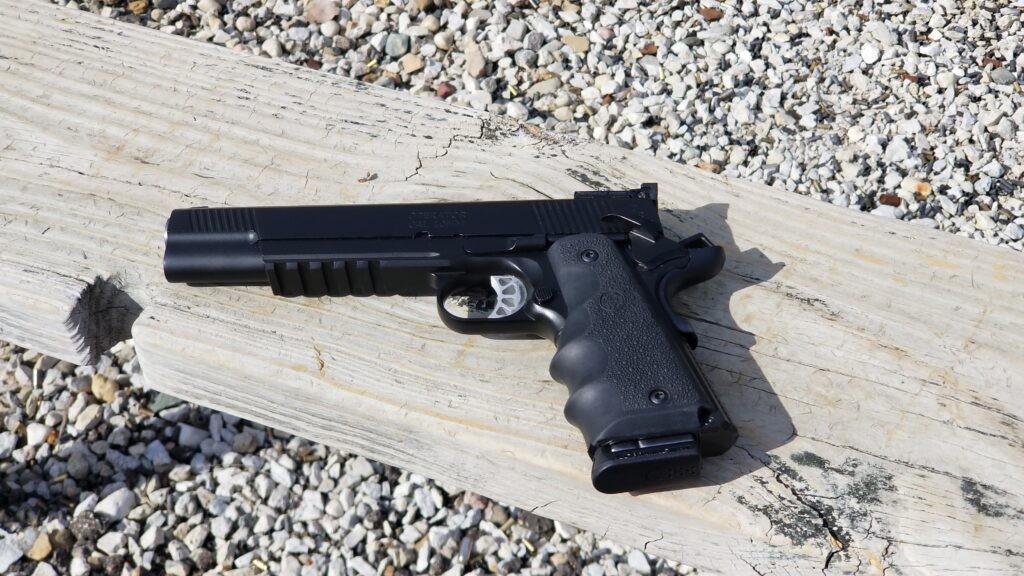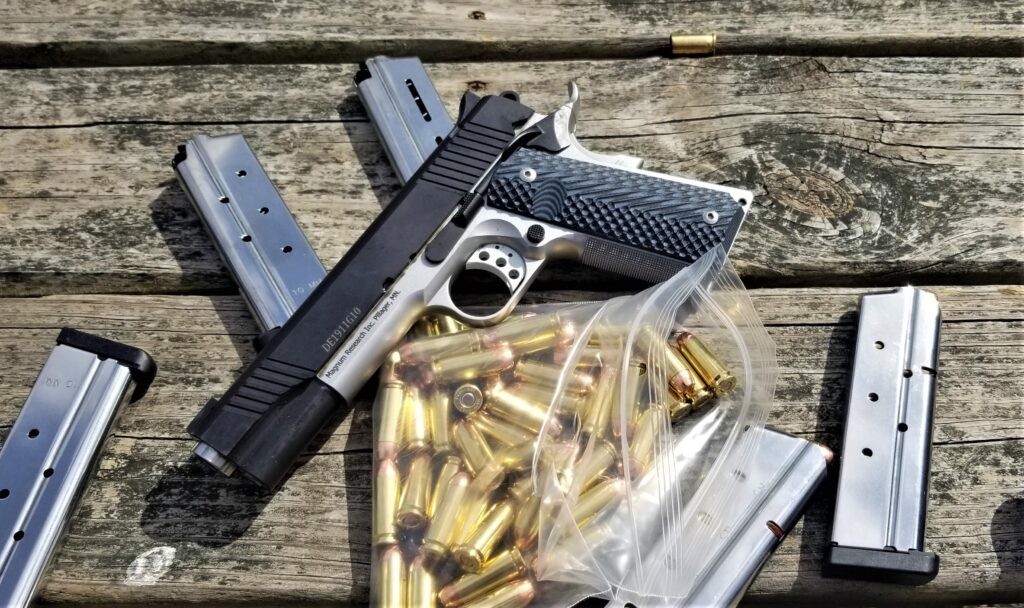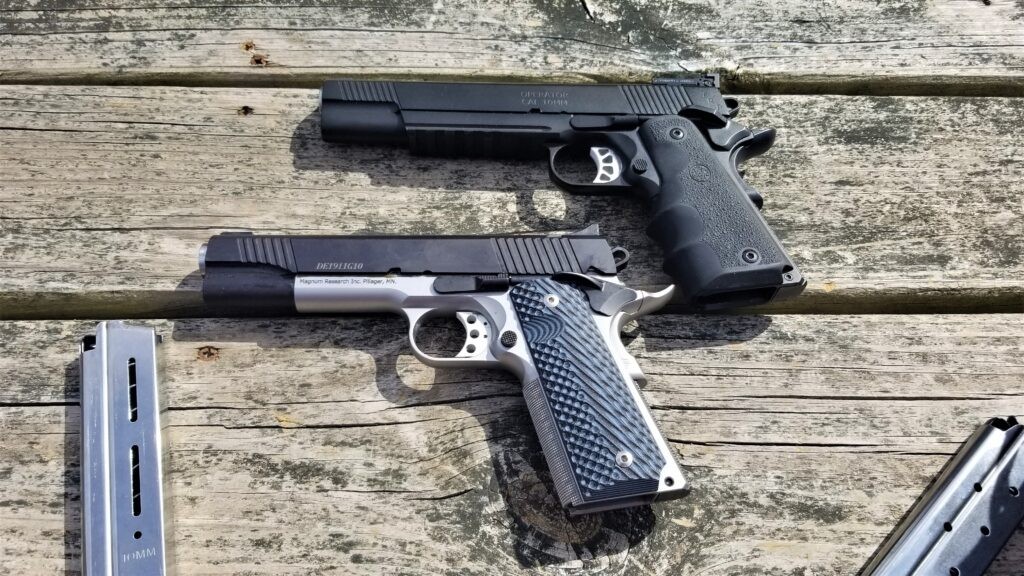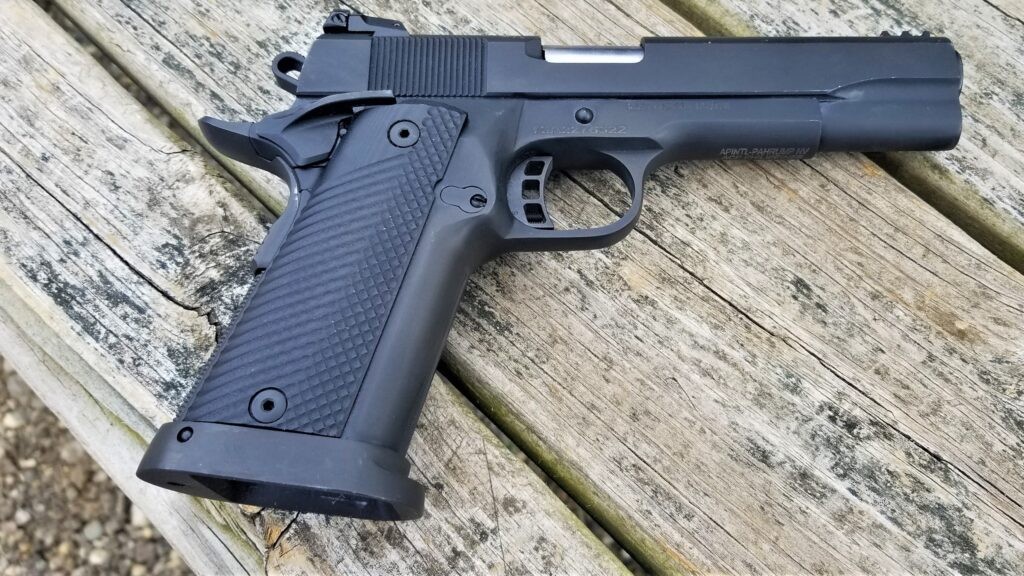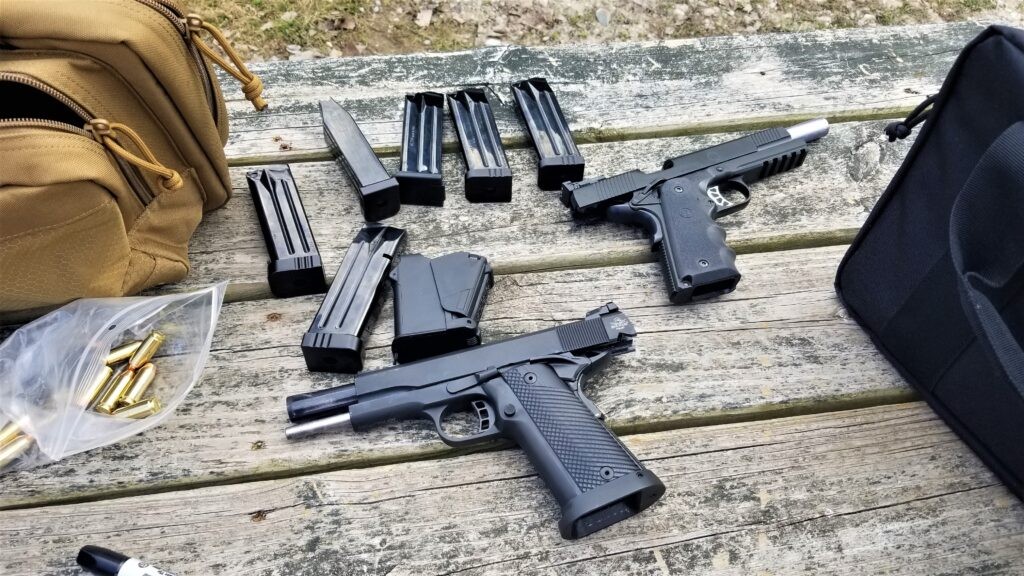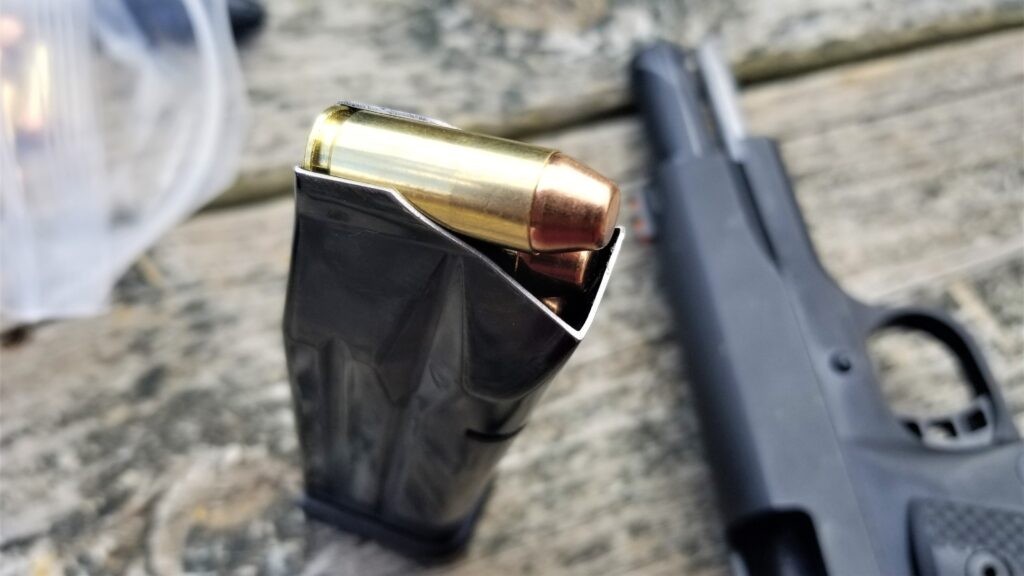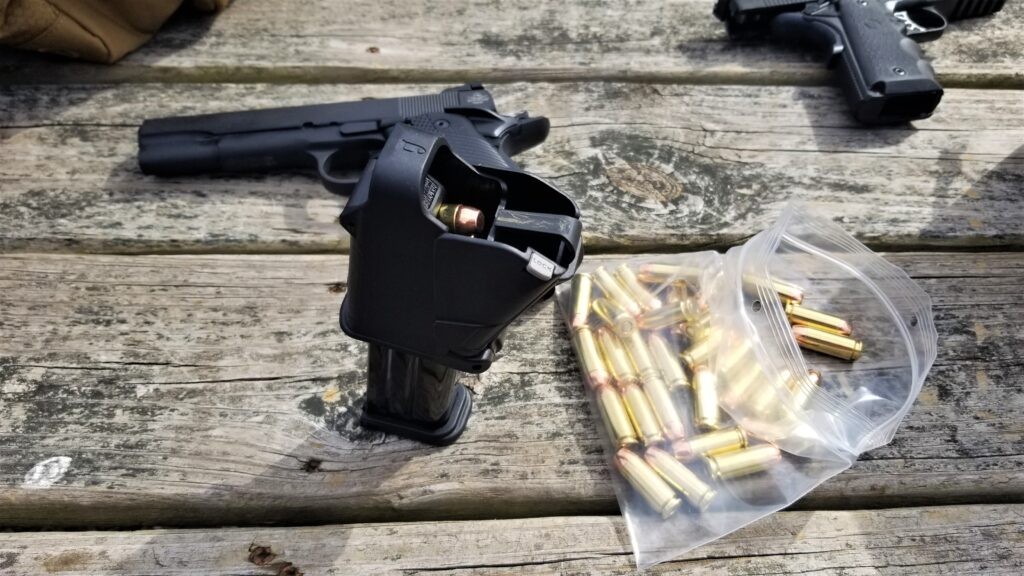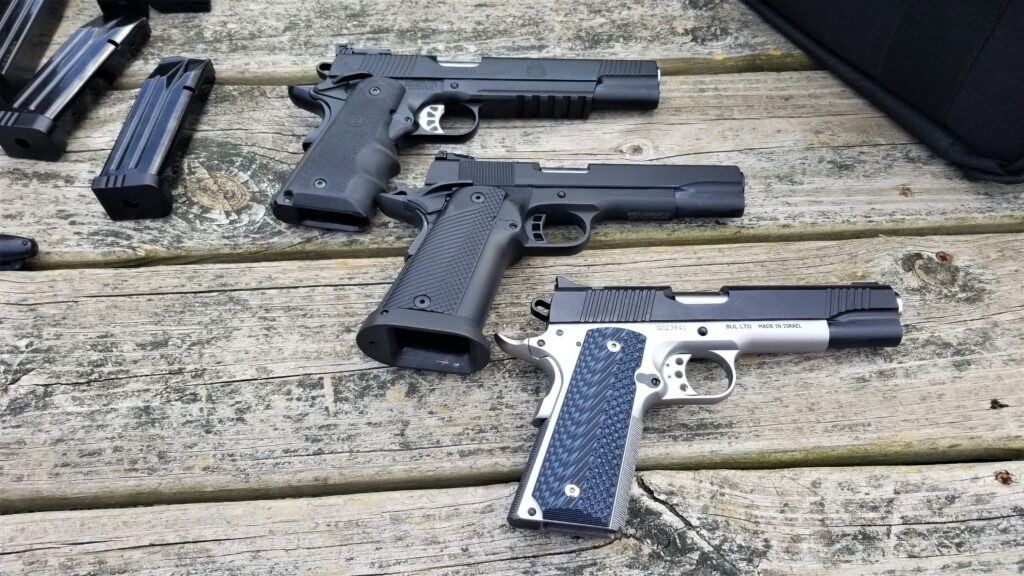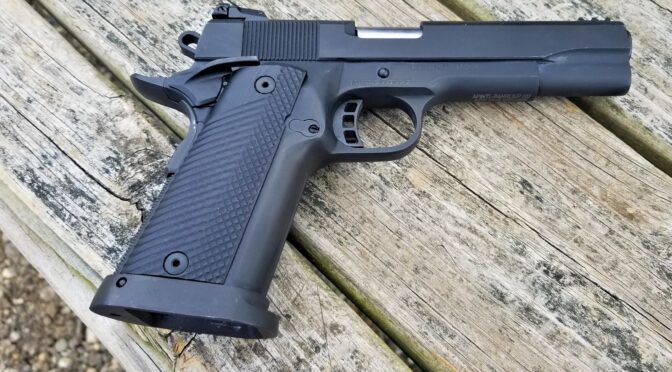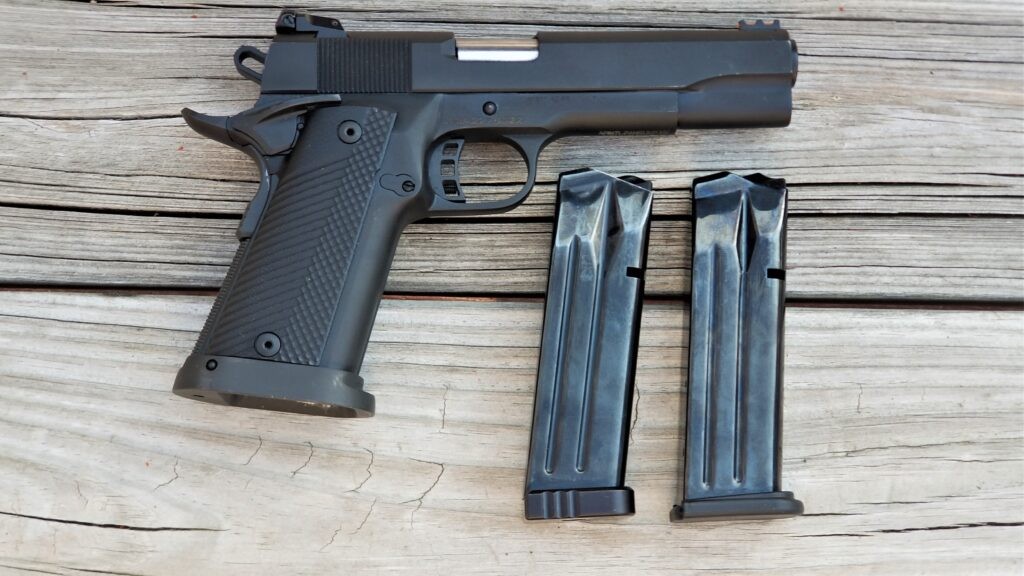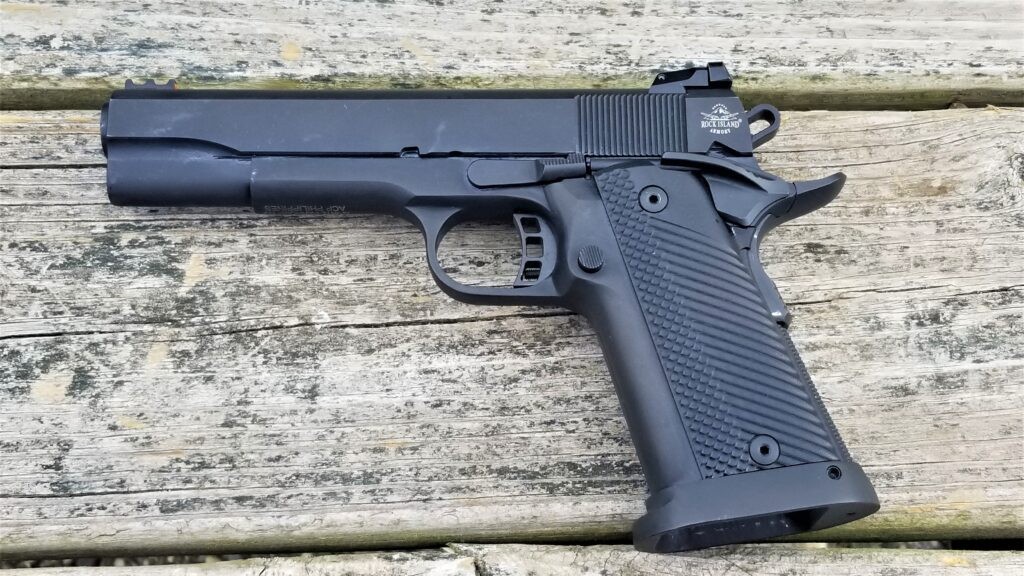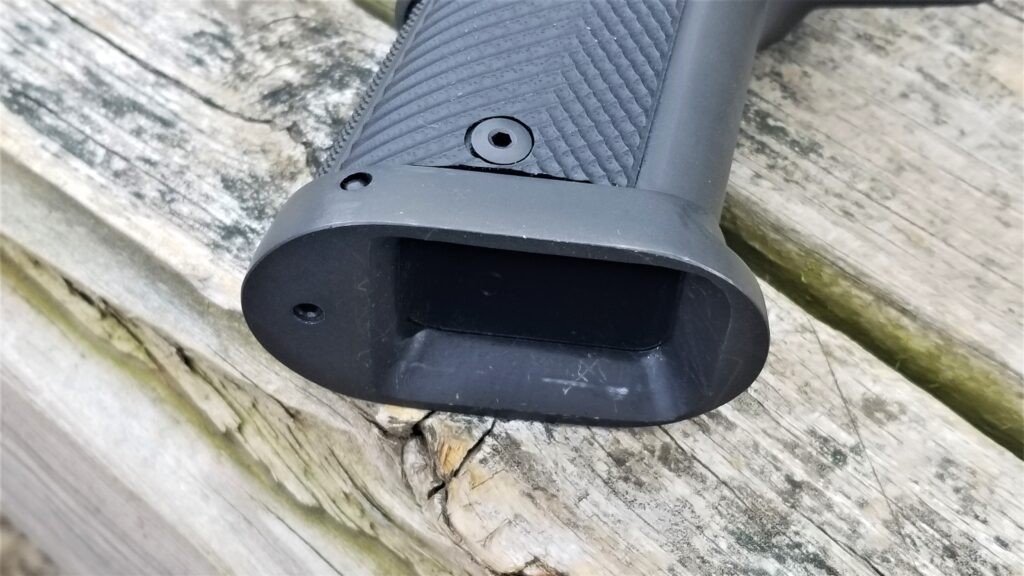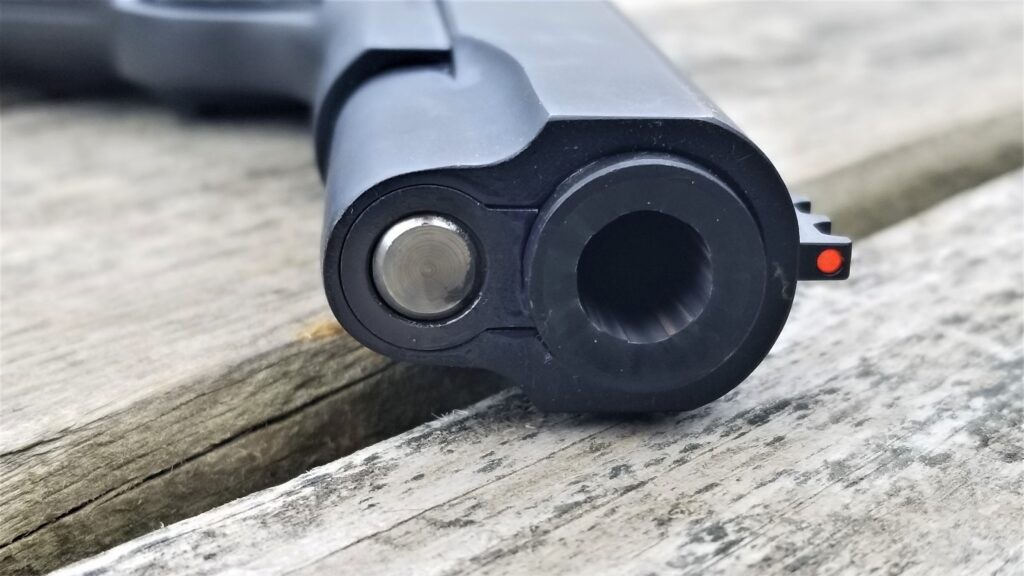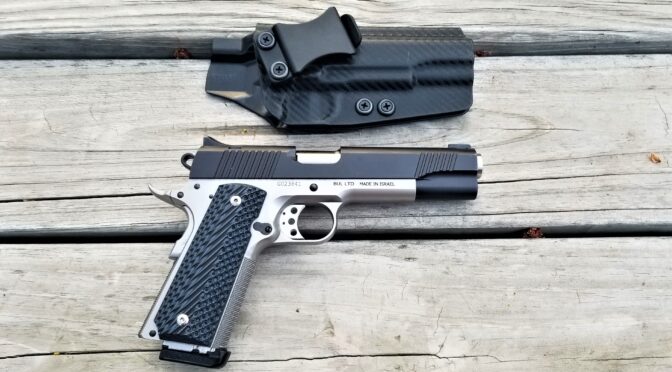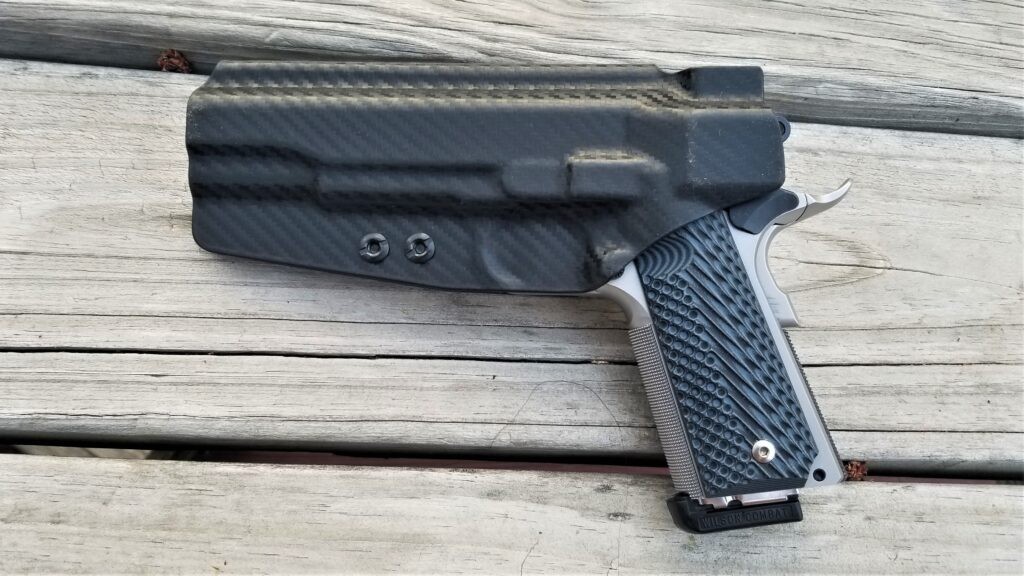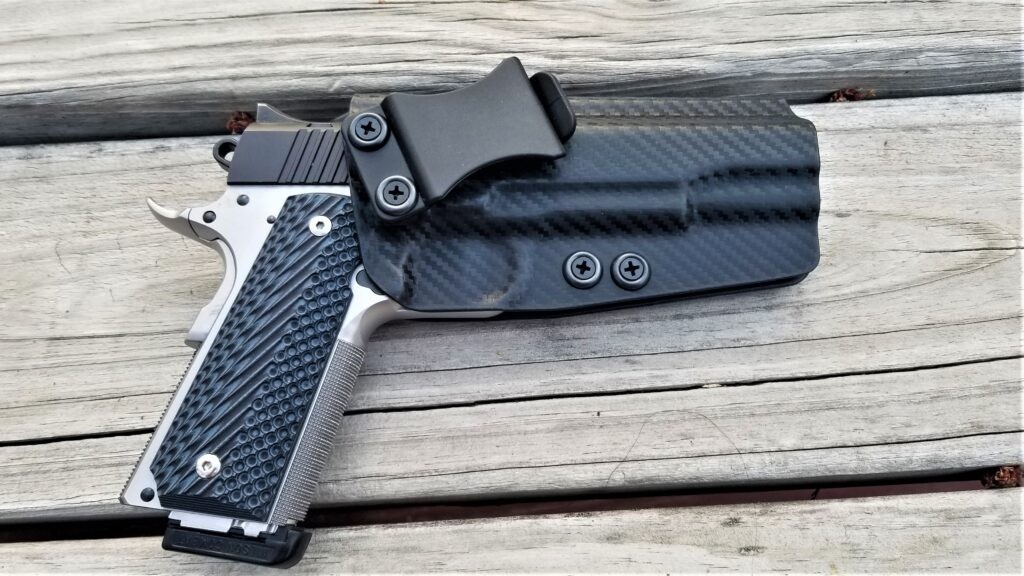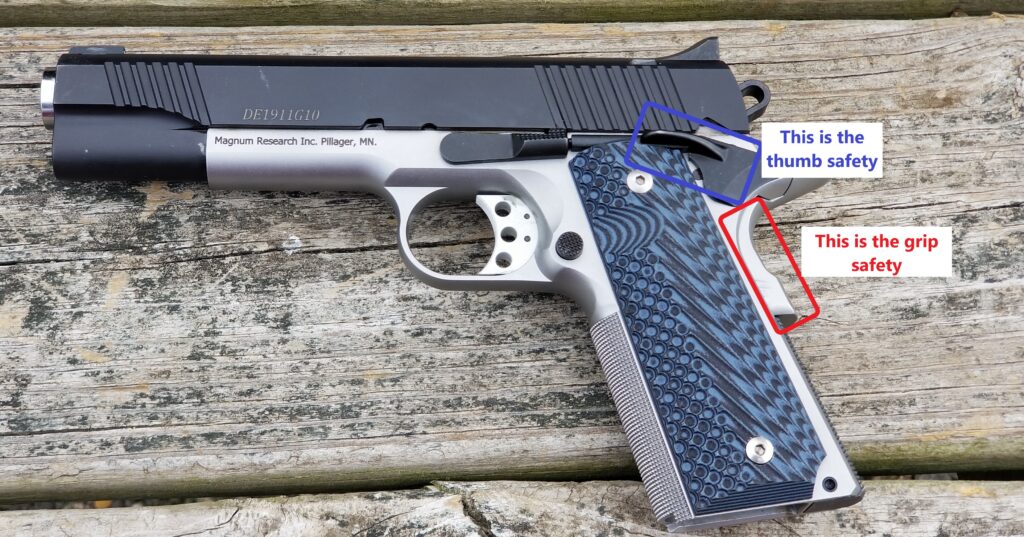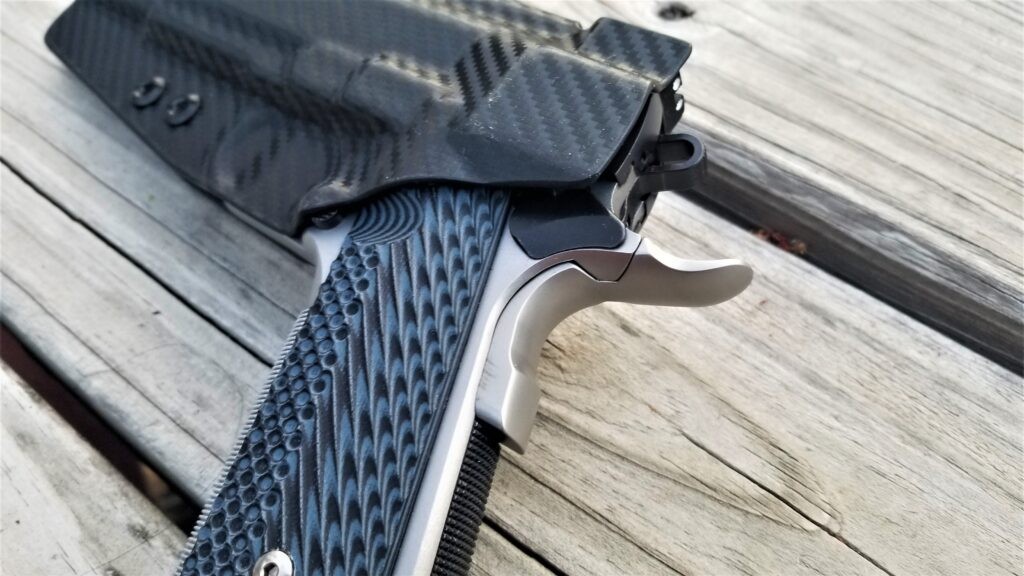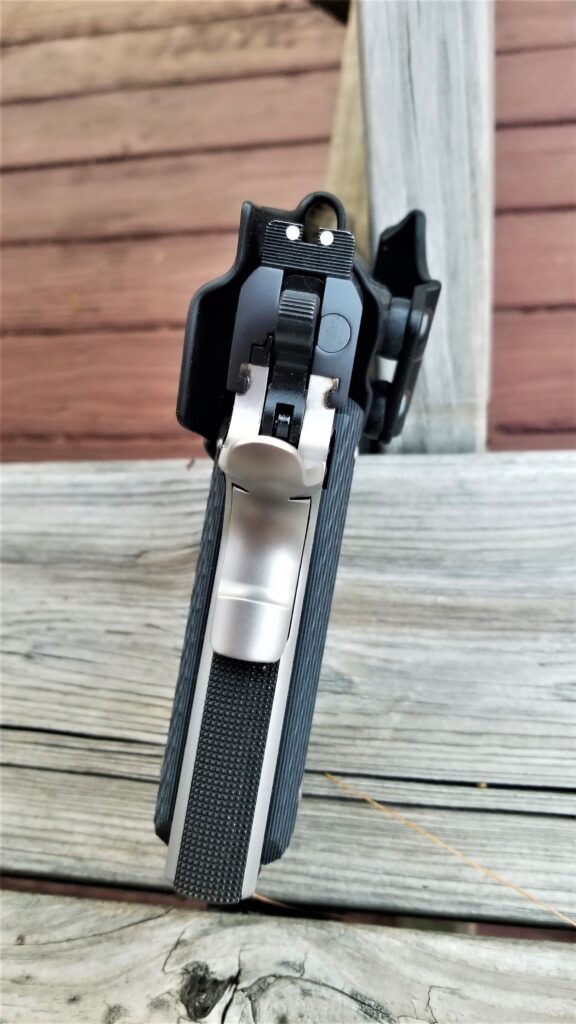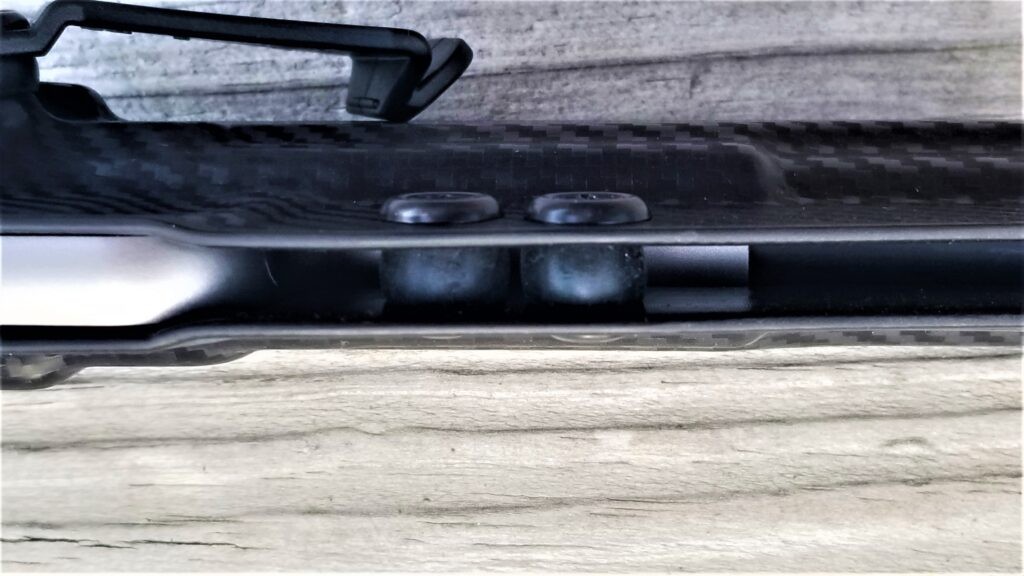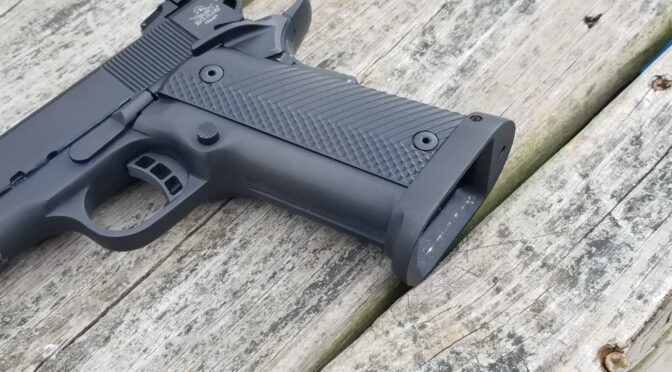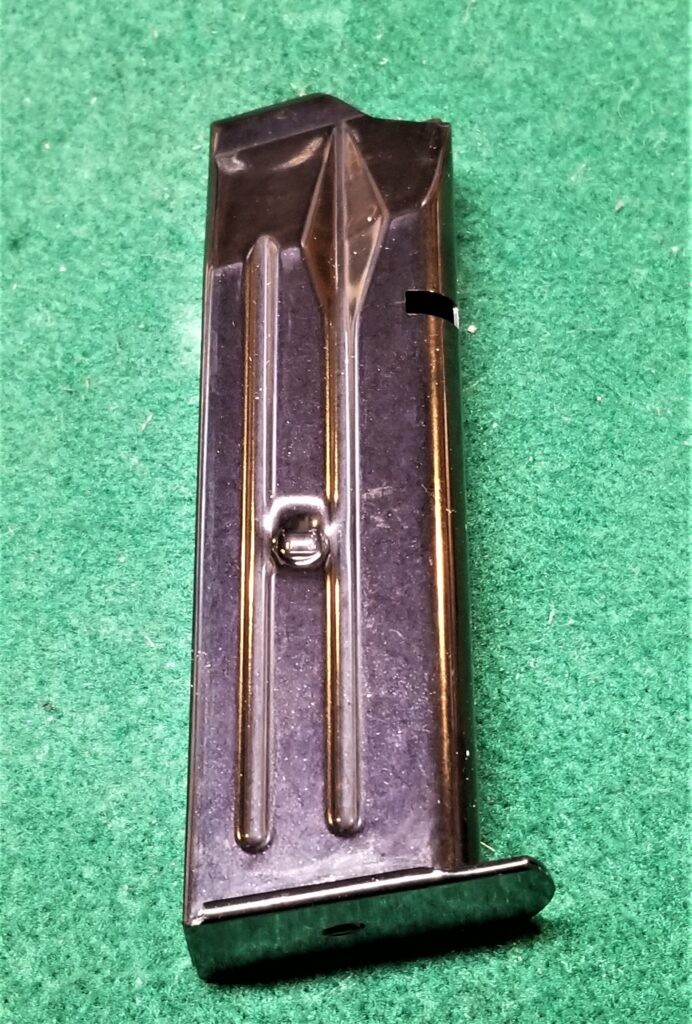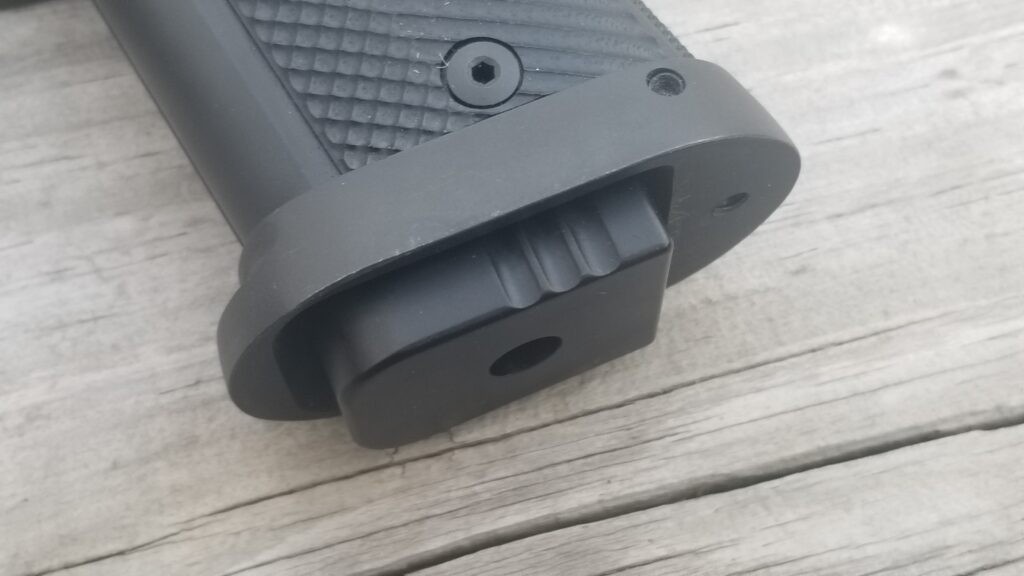Firearms box magazines all work the same – a spring is pushing against a follower that is then pushing the ammunition on the direction needed. The follower is often pushing against at least one wall of the box magazine and dragging. This can be especially bad with steel and aluminum magazines making loading the magazines more tedious and even cause problems with feeding. It begs the question – how can I lubricate the inside of the magazine?
The knee jerk reaction is to put oil in the magazine to lubricate things. I’d recommend against this course of action because the oil will trap dirt and eventually can start causing sticking and jamming.
I’d recommend that you use a dry film lubricant aerosol instead. These sprays on and then the liquid evaporates off and what is left in place are thousands of particles that are slippery. I do not recommend any of the dry films that include a wax – like chain lubes. The wax may trap dirt as well over time.
| Don’t spray anything in, or on, a plastic magazine without first checking with the manufacturer. Some plastic magazines are self-lubricating and don’t need any additional lubrication. Also, when spraying any solvent (which is basically what the dry film particles are floating in) on plastic, you risk the plastic getting gummy due to a chemical reaction – this depends on what plastic they useed. My recommendation is really for steel and aluminum magazines. |
A Quick Side Note About Teflon
Up until a few years ago, I used to like Teflon, which is what Dupont, the owners of the trademark call it. Teflon was discovered by Chemours, which was a spin off from Dupont, in 1938. If you see someone selling “PTFE” – that is the generic name for Teflon. By saying their product contains “PTFE” then they don’t have to pay royalties to Dupont or risk having Dupont sue them.
So, Teflon and PTFE were selling great and then people started worrying about the safety of people eating Teflon, Teflon in the environment and so on. I’m not hear to weigh in on this but whether it was concerns over marketing, lawsuits or just the pandemic, the Dupont Teflon Aerosol Spray went on hiatus for the longest time.
In late 2021, it re-appeared but with a different formulation. The new spray uses a ceramic now and not Teflon. I corresponded with Hank Krause the president and CEO of Finish Line Technologies – the group that actually markets the spray. I was concerned about the change in formulation because the Dupont spray had been excellent before. Want a quick way to test this? First, spray some competing dry films on a black plastic surface and see how some of them actually leave very little residue. Also look at how evenly the distribution is. Not all are the same.

Nano-Ceramic Boron
At any rate, Hank told me that they have moved away from Teflon to Nano-ceramic boron nitride particles and I told him my concern that I didn’t know whether to change to a new dry film technology I knew nothing about. Hank told me the new formulation used thier same propretary technology for binding the particles to the surface and the following are benefits of the new ceramic technology over Teflon (I will copy and paste his list verbatim):
- Helps extend life of the lubricant, thus delivering longer relubrication intervals
- Provides enhanced lubricity
- Provides better extreme pressure capabilities
- Increases the high temperature operating range of the lubricant
- Provides better resistance against chemicals
- Helps repel water and moisture more effectively
So, based on Hank’s assurances, I ordered in some cans of the spray and started testing them. The residue looked very similar to the Teflon test above – the ceramic dry film residue is also white.
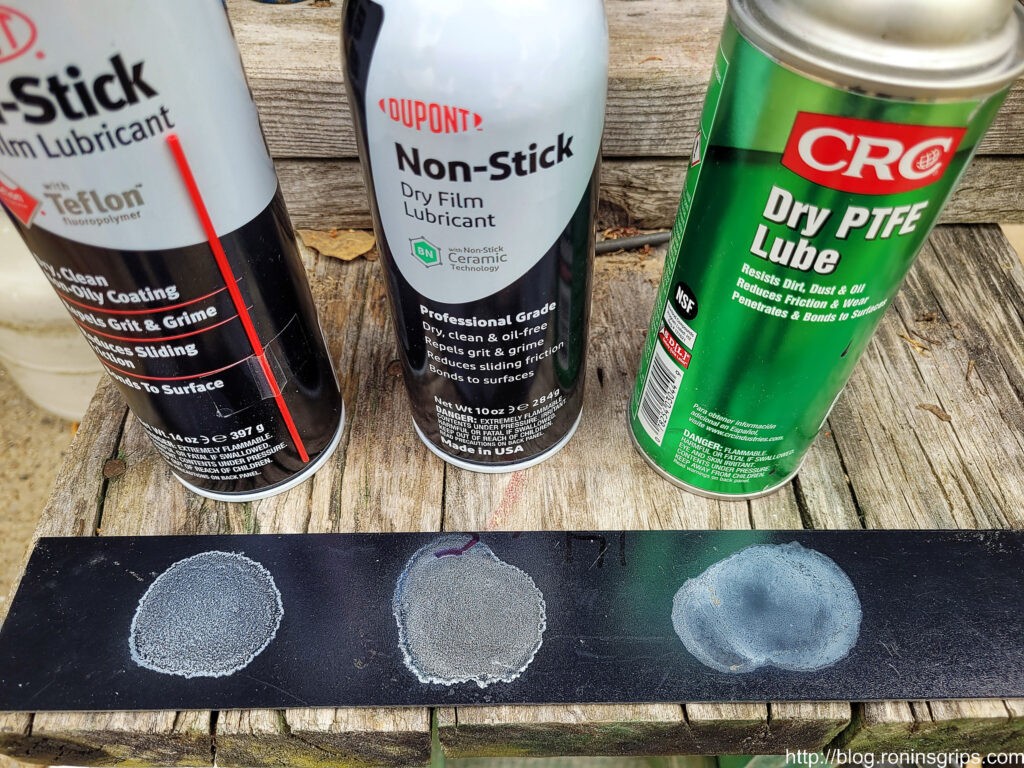
In terms of lubricity, it does the job just as well and maybe even better than the Teflon. While this may seem subjective, the lubrication seems very good with one solid spray of the ceramic both in the tube of the magazine and on the follower. Any over spray wipes right off with a rag.
With the ceramic spray, feeding rounds by hand into the magazines and unloading all feel very smooth. Bear in mind that this comment is after hundreds of loaind and unloading cycles by your’s truly.
Our new second generation followers for our RIA 9mm magazines are converted from OEM followers with the final step being fine sanding paper. It’s my speculation that the ceramic particles are getting into the tiny grooves of the follower and providing excellent lubrication.
At any rate, I am very happy with the new Dupont Ceramic Dry Film aerosol for use inside firearm magazines and wanted to pass along the word. Going forward, we are using the Dupont product in all of our steel magazines that do not already have an anti-friction coating (AFC).
By the way, I cleaned out a bunch of IMI Galil magazines that I bought and you could tell there was a bunch of friction going on in the mags between the parkerized tubes and followers – the parts hadn’t worn in yet by any means. With the mags disassembled, I sprayed in a heavy coat of the Dupont Ceramic Dry Film in the tubes and sprayed both the followers and springs, let them dry and re-assembled the mags — wow! What an amazing improvement. Click here for the Amazon Listing.
I hope this helps you out.
| We make a variety of magazines for the 10mm, .40 S&W and 9mm Rock Island Armory (RIA) FS A2 pistols. Click here to see them. |
Note, I have to buy all of my parts – nothing here was paid for by sponsors, etc. I do make a small amount if you click on an ad and buy something but that is it. You’re getting my real opinion on stuff.
If you find this post useful, please share the link on Facebook, with your friends, etc. Your support is much appreciated and if you have any feedback, please email me at in**@*********ps.com. Please note that for links to other websites, I may be paid via an affiliate program such as Avantlink, Impact, Amazon and eBay.
